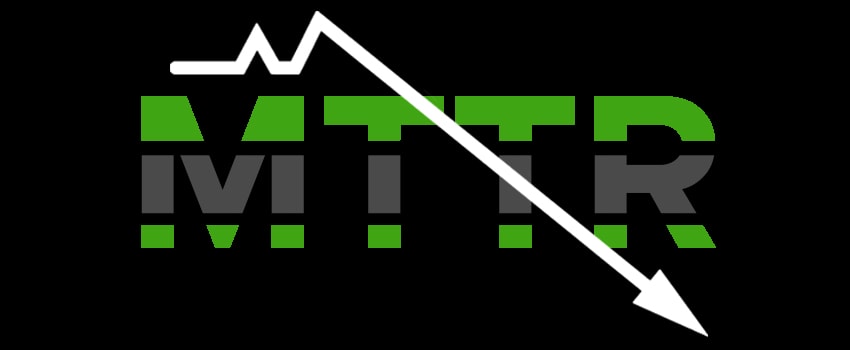
The A-Z of ITSM in 2020
It seems that people like my IT service management (ITSM) A-Z lists. So, as 2020 rapidly approaches us, here’s an A-Z of the many important facets of ITSM to consider and address for both next year and beyond (and many of them have definitely been rising up ITSM to-do lists for a while).
So please strap yourself in while I take you through 26 ITSM areas that might warrant your attention in 2020.
AI and automation
I feel bad starting a list with a technology-based point, but the letter A just has to belong to artificial intelligence (AI), or AI and automation. There’s no doubt in my mind that AI and automation is a foundational building block for the future of ITSM (and that future is already here). AI-based capabilities have already been added to ITSM tools and more will come. Industry surveys are showing that organizations are already adopting these capabilities, or planning to do so in the short term. So, whether it be chatbots, service orchestration, or advanced automation – 2020 will be their year.
Back-office digital transformation
This is my first cheat of this blog but it’s not my usual kind (don’t worry I have some later). I need to mention enterprise service management in the context of 2020, but I also need to include employee experience. So, this was my compromise – talk to back-office digital transformation as a key current use for enterprise service management. To quote what my boss, Sarah Lahav, says in her “ITSM Trends and Predictions for 2020” blog:
“In 2020, enterprise service management adoption will continue to grow as it supports corporate back-office digital transformation initiatives. This was shown in the SysAid Future of ITSM survey, where two-thirds of respondents stated that their organization either has or is planning to develop an enterprise service management strategy. We’re also seeing it with our customers who are taking their ITSM best practices and enabling technology outside of IT to support other business functions such as human resources (HR) and facilities.”
Here @Joe_the_IT_Guy looks at the 26 areas of #ITSM that might warrant your attention in 2020 and beyond. Share on XChange must change
Change has long been one of the key factors in the DevOps community’s dislike of ITSM. And, in many ways, there are some good points raised when it comes to the level of red tape and bureaucracy that some organizations instill within their change management, or change enablement, capabilities. In particular, when the change advisory board (CAB) is unfortunately adopted as the change approval board. Let’s make 2020 the year when our organization’s change handling capabilities reflect the best of both DevOps and ITSM best practices. It’s what your organization deserves and, more importantly, needs.
Digital transformation
Letter D just had to be this. But what is there still to say about digital transformation that hasn’t already been said? The need to (successfully) digitally transform still looms large over many organizations, but I’m still not convinced that enough of them have woken up to the fact that digital transformation isn’t actually about technology change, that it’s about business and people change. This ties in with the letter O and organizational change management later on.
Employee experience
Having slowly crept into the collective consciousness of the ITSM community over the last 5 years, with my friends at HappySignals banging the employee-experience drum loudly. It’s now near the top of the pile vying for the attention of ITSM, and wider IT, leaders. As to what to do with this thing called “employee experience,” I’m advising people to focus on employee productivity (see the letter P later) in line with the Forrester Research statement that: “Psychological research shows that the most important factor for employee experience is being able to make progress every day toward the work that they believe is most important.”
There's no doubt in my mind that #AI and #automation is a foundational building block for the future of #ITSM (and that future is already here), says @Joe_the_IT_Guy. Share on XFailure is not an option
Sounds dramatic, maybe even scary, doesn’t it. But there’s much that needs to change in terms of what ITSM was and what it now needs to become. This encompasses many of the aspects included in this A-Z list. For example, the introduction of AI-enabled capabilities (along with the organizational change management requirements) plus the fact that the knowledge, skills, and experience of certain ITSM roles will also need to change to reflect the new ways of working. Unfortunately, it’s going to be a Darwinian “evolve or die” scenario for many ITSM organizations as they need to change and improve across both their IT service delivery and support capabilities to reflect the demands of the new business world.
Guidance beyond ITIL
2019 was ITIL’s year, given the release of the new version – ITIL 4. But, as ITIL 4 itself calls out, there are many other sources of best practice ITSM and IT management guidance out there. This includes COBIT, IT4IT, VeriSM, and ISO 20000. You can find out more about all of these in my blog roll – please just follow the links. Then take the time to work out how these, or parts of these, approaches can help your IT organization.
Help is out there (or, at least, it needs to be)
In my opinion, the ITSM community needs to take a leaf, if not a whole chapter, out of the DevOps community’s book. They seem to be great at sharing what different organizations have done, achieved, and learned for the collective good. I know we have helpful blogs, educational industry events, and even some useful marketing papers, but I still think we need to do more as a community to help each other to learn and grow.
ITIL 4
The ITIL 4 foundation publication released in early 2019 offered up a completely revised approach to ITSM, albeit with many of the same processes or practices as earlier versions of ITIL included as the components that make it happen. I’d like to again echo what Sarah Lahav says in her 2020 predictions blog. That, a year on from ITIL 4’s launch and with the introduction of the more detailed best practice guidance in early 2020, it’s time for this new version of ITIL to influence the ITSM industry and the organizations within it. I’m hopeful that it will – from the focus on value, through the adoption of new capabilities, to the required changes to ITSM tools.
In 2020 the #ITSM community needs to take a leaf, if not a whole chapter, out of the #DevOps community’s book says @Joe_the_IT_Guy. Share on XJack of all trades
I can’t help but think that as the work we do in ITSM changes and our roles change accordingly, we ITSM professionals will more and more become “jacks of all trades,” i.e. we’ll become generalists rather than specialists. Allowing for far more fluid movement between different ITSM teams and roles, thanks to the specialist knowledge and capabilities now being held within third-party suppliers (please see the letter T). Importantly, this doesn’t mean that certain roles and the individuals that fill them are less valuable. They’re just as valuable but valuable in a different way.
Key performance indicators (KPIs)
I wish my A-Z list had two Ks (as well as two Es) because I could have done with including the importance of knowledge management too! Never mind, back to KPIs… As with the people-related letter K, all of this change will also affect our ITSM metrics and KPIs. They should, therefore, be on your 2020 to-do list in terms of being reviewed and revised to reflect new business needs and changed ITSM operations.
Learning
I nearly went for “Lean” here, then realized that this other foundational principle of DevOps is a better callout for letter L. ITIL 4 has moved continual service improvement (CSI) on to continual improvement and hopeful the spirit of “experimenting and learning” from DevOps can help to raise the profile and adoption levels of this too often neglected ITSM capability. 2020 will definitely be the time for many organizations to strive to be better.
Management practices
I know that I’ve already called out ITIL 4 with the letter I, but ITIL’s move from processes to practices is important enough to also warrant inclusion in my A-Z list. The important thing now is whether organizations and their people are listening (and nodding) to the need to rise above the ITIL processes of old to appreciate that their focus actually needs to be on the collective outcomes of people, processes, and technology (plus the increasing role that “partners” play).
‘New normal’
Please pardon my management cliché there. But, in 2020, ITSM professionals should expect a new normal. Because, as with the letter F, so much is changing, and needs to continue to change, in terms of what ITSM needs to deliver to meet business needs and expectations. While the phrase “new normal” might seem a little cheesy, I truly believe that we ITSM professionals desperately need to move with the times and the different expectations that are now placed upon us. For example, the fact that employee experience is now important in IT support terms (even if simply from an employee productivity perspective) means that many of the traditional metrics that IT service desks have lived by for the last decade or so are probably not driving the right kind of service desk analyst behaviors (and we’re back at the letter K).
Organizational change management
Much will change in ITSM (I know I keep saying so). Not only in 2020 but also in the years beyond. It’s therefore important for ITSM professionals to finally recognize the need for organizational change management for any people-affecting changes that are made. Importantly, this is inevitably most changes because even the introduction of new technology, or changes to existing technologies, will have an impact on ways of working and thus the people involved. Just look to the low adoption levels for self-service technologies a few years back due to the failure to address organizational change issues.
Productivity
Or, more specifically, employee productivity. Importantly, this isn’t the productivity of IT employees – although their productivity is important too – it’s the productivity of the employees they serve. That the “killer app” for employee experience initiatives is likely to be making improvements that up employee productivity. Why? Because not only does this drive up employee “happiness” (as per my earlier Forrester quote) but it’s also a contributing factor to better business performance and outcomes. Everyone wins!
Quick wins
It’s easy to think of quick wins as the potential opportunities to be taken when you start something new. However, in the same way that there are always opportunities to improve, there are always likely to be quick wins available too. So, when looking at your opportunities for improvement in 2020, please take the time to understand whether any can be quickly accomplished and with a minimum of investment and effort.
When looking at your opportunities for improvement in 2020, take the time to understand whether any can be quickly accomplished & with a minimum of investment & effort, says @Joe_the_IT_Guy #ITSM Share on XResilience
I don’t know whether you’ve noticed but the word resilience is being used in an ITSM context more and more. It’s an interesting and important perspective for IT service managers – that, rather than just focusing their attention on the management of the many incidents occurring within the corporate IT ecosystem (and then the problems potentially related to those), we need to focus efforts more on creating resilient systems and services such that fewer incidents occur in the first place.
Service orchestration
No, it’s not me and a room full of musical instruments. It’s the term used for the automated delivery of low-level services which consequently frees up your IT staff up to work on more beneficial activities. You can read more about it in this service orchestration blog. Expect to see, and demand more, service orchestration in your ITSM activities during 2020. It not only makes sense; it also makes everyone’s lives better.
Third-party management
While many talk of the management of third party service providers as service integration and management (SIAM), we shouldn’t forget that most organizations, not just the largest, are increasingly buying in services as part of their overall IT service delivery and support capabilities. Whether this is due to the lack of internal capabilities or a cost or efficiency-driven thing. Hence, most ITSM teams will increasingly need to manage more third-party suppliers, especially cloud service providers, in 2020 and beyond. With ITSM roles and associated capabilities needing to reflect the skills and nuances of supplier management.
Users no more
Hold on, this might be a soapbox moment on my part… The term “user,” and the politer version “end user,” has long been a part of the ITSM and IT support lexicon. 2020 and all the change it will see surely makes it the year that we try to deliberately refrain from using these terms. After all, we are moving on from supporting the IT to supporting the people that benefit from it (I bet someone just shouted “Yes, they use it, so they’re users” at their screen). I appreciate that many still have reservations in calling users customers because they don’t directly pay for the services they consume. But let’s choose another, nicer, term – whether it be employees, colleagues, or something else – that helps to take the focus away from the technology to allow us to ensure that the priority is employee productivity, (external) customer satisfaction, and better business outcomes.
Value
There simply isn’t another V-word in ITSM that’s as important as value right now as we enter 2020. While we’ve talked about value for at least the last half-decade it’s good to see it playing a key part in industry best practice guidance. For example, in ITIL 4 with its service value system and the concept of value co-creation. In 2020, it’s time to question what we do in ITSM in terms of value. For instance, how does your IT service desk create business value?
Wellbeing
This is another area that’s quickly gaining greater attention in the world of ITSM and boy do we need people to take notice. And in the SysAid Future of ITSM 2019 survey and report from earlier this year, we found that 84% of respondents think that working in IT will get harder over the next three years and, worryingly, just over half of respondents feel that working in IT is adversely affecting their personal wellbeing. I wish I had all the answers already, but sadly I don’t. However, what I do know is that we need to own up to the growing issue we have and start to implement corrective actions that will eventually minimize wellbeing issues as much as possible.
X marks the spot
Hopefully, you’re now used to my occasional cheats in these lists. There’s a serious point here though – that of focus and targets. If you’ve read my “How to Get Your IT Service Desk Ready for 2020” blog, then you’ll know how long it takes for industry change and local adoption to take effect in ITSM. We need to be so much better at staying focused on and achieving the important stuff as swiftly as possible.
@Joe_the_IT_Guy looks at #ITSM in 2020 & says we need to get so much better at staying focused on and achieving the important stuff as swiftly as possible. Share on XYoung blood
I’ve a feeling that I’ve used “young blood” in another A-Z list of mine. However, I feel compelled to use it again on two fronts. First, that the expectations of ITSM teams and their capabilities need to change, and quickly, to reflect the expectations and demands of the millennial employees (if this is still the right term) entering the workplace. Second, we need to ensure that we’re able to bring young people into ITSM. Especially because of the double whammy of sexier IT roles, such as in DevOps, and the potential for wellbeing issues I’ve already mentioned. So, what are we going to do? Even I’ve now got the odd gray hair.
Zazzy
Who on earth invented the letter Z? I bet they’re still smiling. You’ve guessed it, it’s time for another Joe the IT Guy A-Z list cheat (and you just know that I Googled Z words until I found a good one). It seems that zazzy is 1960’s slang for something flashy or colorful – I’ll need to check this with Stuart Rance of course. But my point is that what we do in ITSM doesn’t need to be zazzy. In fact, there’s much that we need to do that could be seen as pretty pedestrian. And there’s nothing wrong with this, in fact it’s probably good to finish this list by making the point that it’s so so important for ITSM teams to get the basics right first.
So, that’s my A-Z of ITSM in 2020 list done. What would you add? Please let me know in the comments.







